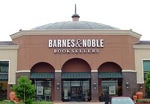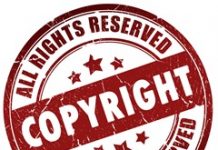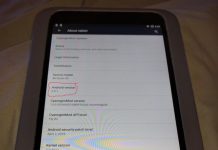
As we know, the two ebooktailer giant in the United States are Barnes & Noble and Amazon. And, as we know, Amazon is currently the number 1 ebooktailer. But there is no reason why B&N, with a bit of shrewdness, can’t move closer to or takeover the number 1 position. I’m prepared to make one suggestion along this path.
Currently, B&N is trying to get people who do not currently own a dedicated ereader to buy a Nook. Why not work on getting people who already own a dedicated device — e.g., a Kobo, Sony, or Kindle or other brand — to move to the Nook? Why not offer a trade-in:
Bring us your working device and we’ll exchange it for a brand new nook! Want the Nook Color, you can have it for your working device plus $75. In addition, we’ll give you a $50 B&N gift certificate for buying ebooks.
I’ll admit that the offer wouldn’t tempt me considering the current state of the Nook as compared to my Sony 950, but I think it would tempt a lot of current owners of other brands. And B&N could make back some of its loss by eBaying the working exchanged devices.
The name of the game is not device owners but getting people to buy ebooks. The device is essentially a one-time sale. Most people buy the device and won’t consider buying an upgrade or newer device for several years, if not longer. In my case, I used my Sony 505 for 3 years before buying the 950 and if I had know that my wife was going to ultimately decide that she still wanted the print version of the New York Times, I would still be using my Sony 505 and would not have bought the 950. I upgraded for a specific reason that turned out to be a failed experiment.
And when I look at what other ebookers list as their device, I note that many ebookers are still using the even older Sony 500 and Kindle 1. There isn’t a groundswell that compels the average ebooker to upgrade the device. After all, the Kindle 1 and the Sony 505 still perform the function for which they were designed — enabling the user to pleasurably read ebooks.
Consequently, with the exception of the cadre who must have the latest and greatest technology, the device is not a revenue generator. Rather, it is ebooks that are the revenue generators and what both B&N and Amazon need to do is get device owners to regularly buy ebooks from their ebookstores. Thus, although exchanging other devices for the Nook would mean taking a one-time hit to the financials, if B&N got its act together, it could turn the person who buys 1 or 2 ebooks a year, or who only “buys” the free ebooks, to buy (for dollars) 10 to 12 ebooks a year.
Of course, should B&N try this it would have to be prepared for the tit-for-tat comeback by Amazon, offering an even better deal for people who exchanged their non-Kindle devices for a Kindle. To my mind, the only defense that B&N would have would be if it came up with superior customer service, aggressive marketing, and — before embarking on an exchange program — a better device.
It isn’t that the Kindle is a better device than the Nook; it is that people believe it is. Neither device is particularly well designed and both can stand some significant improvement, but B&N needs to convince users that everything about B&N is a better ebook experience than can be had at Amazon. B&N can begin by improving its customer service and the Nook. But the real ace in the hole for B&N is its bricks-and-mortar stores.
Some creative thinking about how the b&m stores fit with the Nook experience could let B&N pull rapidly ahead of Amazon in the ebook game. Here’s one thing I would do if I were in charge:
Come into the b&m store with your Nook. Browse our shelves for a book. Bring the pbook and your Nook to the special Nook counter and you can buy the ebook version at 15% off the current ebook price. And if you want to buy both the ebook and the pbook, you’ll get the 15% off the ebook and an additional 15% off the pbook price. (For B&N members this would be in addition to their member discount. Not a B&N member? Join on the spot and get the member discount plus the 15% discount.) And as long as you are here buying a book, have a coffee on us.
I would also have special sale events, worked out with publishers, that are only available in store, such as enabling a customer to obtain the first ebook in a series free if they buy the second and third together.
And why not have special Senior Citizen Nights. If you are a senior citizen, you can learn — one-on-one — how to operate your Nook and while learning how to use it (overcoming the technophobia that is often seen in seniors), we have special discounts for you, and even special subscription deals. OK, I know you are itching to hear more about this idea, so here goes:
If I were B&N’s chairman, I would be calling all of the major publishers, notably the big 6, and try to convince them to offer a special subscription to seniors. For $x per month you can “borrow” any new release for up to 3 weeks. If you haven’t finished it in 3 weeks, you can borrow it again until you do as long as you are a current subscriber. Finish the book in 1 week? Then borrow another book. The subscription fee is for 1 month for 1 device for an unlimited number of books — just 1 at a time — but you can’t keep or lend the book. Essentially it is librarying books for senior citizens with B&N and the publisher each getting a cut.
Even if you don’t like any of these ideas, the point is that B&N needs to turn its b&m stores into an advantage in the ebook world and it needs to increase the number of Nook owners and users. I’m certainly open to suggestions, and based on what I read about B&N, it should be open to suggestions.
Via Rich Adin’s An American Editor blog


































They don’t even have to offer a trade-in – all they have to do is change to the older Adobe DRM version that Sony etc. use. It works on current Nooks, so no change by the customer is needed – it’s all on the B&N store end. It’s quite strange why they haven’t done this, as people with a Nook can buy books from other ebook stores, and thus money is “leaking” to those other stores, but not back again.
Wow, what kind of margins do you think bookstores (even huge ones like B&N are working with?) If you’re going to make it that easy for people to get 30% off, give them free gift cards, and the like, you’re not going to have the money to pay the salaries of all those ace-in-the-hole people working at the store.
Okay, Rich, you’re right: I don’t like most of those ideas; but I do like the idea of B&N’s leveraging their physical presence. In fact, one of the best things about B&N’s presence now is being able to walk up to a kiosk of Nook and Nook Color devices, and having a sales rep standing by to answer questions and show you how it works (though, as has been discussed elsewhere, their ability to do that could stand improvement). If Amazon had that, I might have bought a Kindle 2 years ago… as it is, it was a year after it was released that I even saw one, and I wasn’t going to buy something like that sight-unseen.
For seniors? I know friends’ kids who don’t know how they work, or the big advantage to ebooks! And I’m finding new tricks for my NC all the time (and don’t have an AARP card yet). Seniors aren’t all technophobes, and everyone else isn’t tech-savvy.
Although I love browsing through B&N, I didn’t buy most of my books there even before I had a Kindle, I used Amazon and the Amazon Marketplace. Sure, I bought a few, but a brick&mortar store can’t compare to the selection and price at Amazon.
As for eReader and ebooks, Amazon wins again. In addition to the regular selection of titles, they have a wealth of indie books and their own publishing programs at B&N doesn’t.
Finally, I don’t think this is true:
“Neither device is particularly well designed and both can stand some significant improvement”
I think they both have a nice design for their purpose, which is to read books. The only improvement I’d like to see is a sturdier eInk screen, they are much too fragile.
I am not pushed on whether B&N survive or not. But if they want to get out of the mess they are in they need to enable people with all other devices to buy from B&N. They also need to adopt a more competitive pricing strategy.
All your ideas have merit and I am sure BN would already have instituted them if Amazon, Steve Jobs and The BIG 6 publishers had not colluded and price fixed the books. The truth of the matter is BN CAN’t offer discounts…or believe me they already would have (and did before the price fixing fiasco). In order to sell the books from the bix six publishers who sell the majority of the fiction books in the business they (BN) must sell at the same price as Amazon et al. Crap for readers all round.
Rich, have you been living in a cave for the last year? Of the books where B&N is selling both ebook and pbook editions, 70%-80% of the ebooks are sold under the Agency marketing agreement, where the publisher sets the price, B&N gets a fixed percentage of the price, and no discounting is allowed.
Common Sense: B&N has had their own publishing program, PubIt, for about 4 months now. I’ve seen more indie publishers showing up at B&N lately, but Amazon clearly is the leader here.
I also wonder why B&N is only limiting ebook sales to Nooks and the few other readers supporting their DRM. Perhaps they were expecting all new readers released in 2010 using the Adobe software to support the B&N DRM, but anyone with their own store (i.e., Sony and Kobo) is opting to not support the B&N DRM, even if B&N/Adobe are not charging extra for it.
My understanding is that the Nook ties the DRM of a book to a credit card number. I will never buy any device or books that uses credit card numbers as their keys.
B&N will never be “number one” as long as they only sell to Americans. The world is just too big for that now.
The nook does not use a CC number as keys for their DRM.
B&N already has the More In Store and Read In Store initiatives to make use of their physical stores as well as Nook ‘classes’, though the idea of a Nooksquad sounds interesting. Given the overheads of a physical store none of this is going to help them much. If I was CEO then this is the strategy to follow:
1) Selling more digital readers and tablets from other companies with B&N software preloaded. A no-brainer really and it will happen in the next quarter at the latest.
2)More educational games and toys – expect lots and lots of Lego.
3)They will probably try to enlarge their cafes.
4)Go international with ebooks, probably UK first in the second half of the year.
On line they need to invest in better severs, they are clearly being overwhelmed. The trade in idea makes little sense. This is not a mature market, 90% plus of all customers are still to be won and have no experience of ebooks. Growing faster than an exploding market is the game and the strategy is to concentrate on ebook virgins.
The real problem for B&N is that their physical stores need to change from selling mainly pbooks to selling an assortment of goods, with digital hardware getting pride of place. In a couple of years pbooks will make up well under fifty percent of a stores turnover. The transition though will be very tricky and a lot could go wrong in the meantime.
Helen wrote: “I am sure BN would already have instituted them if . . . ”
When a company screws up it’s business as much as B&N have done, I assume nothing. How much did B&N fight the Agency model development ? Does the Agency model prevent B&N from selling to other devices ? Does it prevent them from adopting more innovative systems where customers can obtain vouchers to help them buy the titles ? The answer to all of these questions is more than likely no. And that is why they are where they are.
Speaking as a Sony owner, I agree with Frode wholeheartedly. I would buy ebooks from B&N if I could read them on my Sony. Those two companies need to form a strategic partnership and get their DRM in sync. Sony would probably sell more hardware if customers knew they had access to B&N’s catalog, and B&N would open a whole new market of e-book buyers.
Why not sell ebook in standard epubs that can be used on other epub compatible ereaders? Sony and other epub ereaders cannot use the B&N nook epub because of the extra special DRM B&N has added on.
@Barbara Henry, it was Sony’s choice not to allow Adobe Password DRM on their new readers (heck they could have added it to their older ones too) as it’s an option they have in the Adobe SDK and decide not to allow.
As to why they use the form of DRM they use. It’s so they don’t have to pay the same Content Server and per download fees that places using Adobe ID DRM. B&N cut a deal with them to include their eReader style (ie: Password style) DRM in Adobe’s offerings.
A lot of nice discussion on this. When I bought my Nook, I got a nice card listing in-store seminars on the Nook. And they definitely push the in-store advantage. I think B&N is doing their best to leverage their strength…the physical store that they have.
In terms of trade-ins, maybe this is a good idea. Reselling on eBay isn’t. Why encourage a potential Nook buyer to buy a Sony junker (yes, Rich, I know you love your Sony) for fifty bucks, add fifty more and get a hundred dollar color nook when B&N is selling out color nooks at $250. No, they’d have to junk them.
One thing I think they should do is make it easier to find free content. Amazon does this with the top sellers free and paid but B&N doesn’t.
Rob Preece
Publisher